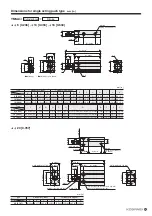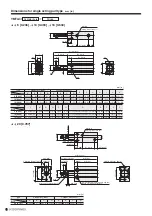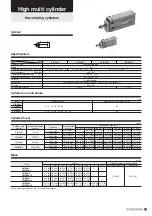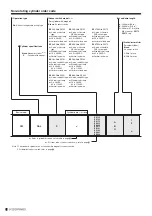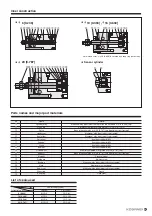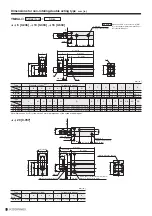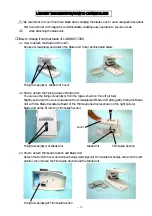
6
1. Prevent nearby moving objects from coming into
contact with sensor switches.
When the cylinders equipped with sensor switches are mov-
ing, or when moving objects are nearby, do not let them come
into contact each other. In particular, lead wires may become
worn or damaged causing unstable operation of the sensor
switch. In the worst case , this may result in current leakage or
electric shock.
2. Always turn off the power before performing wiring
work.
Wiring work while the power is on could result in electric
shock. Also, incorrect wiring could damage the sensor switch
in an instant. Turn on the power after completing the wiring
work.
1. Check the "catalog" and other reference materials
for correct wiring.
Improper wiring could result in abnormal operation.
2. Do not share wiring with power or high voltage lines.
Avoid wiring in parallel to or shared in the same conduit with
power line and high-voltage line. Such wiring could cause the
sensor switch and control circuit to suffer erratic operation by
electric noise.
3. Be cautious against not bending the lead wire
repeatedly or applying tension force to the wire.
Applying repeated bending stress or tension force to the lead
wire may cause the wire to be broken.
4. Check polarity in the wiring.
For the sensor switch with the polarities (
+
, −, output) indicat-
ed, make sure that wiring connections are correct. The wrong
polarities will result in damage to sensor switches.
Wiring
DANGER
WARNING
Safety Precautions (Sensor switch)
1. Avoid short circuiting loads.
Turning on the sensor switch while the load is short-circuited
causes overcurrent, which will damage the sensor switch in
an instant.
Example of short-circuit load: Sensor switch’s output lead wire
is directly connected to the power supply.
CAUTION
Always read these precautions carefully before use.
Summary of Contents for YMDA Series
Page 34: ...33 MEMO ...

















